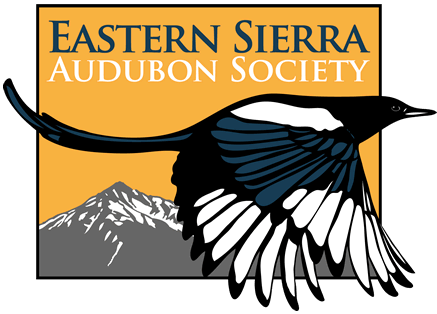[Originally appeared in the Sierra Wave newsletter, Vol. 27, No. 5, May-Jun 2009 – click here for original with photos]
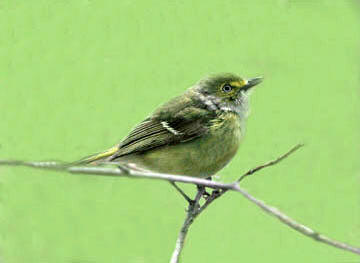
White-eyed Vireo, Photo by Jo Heindel
There are fourteen to fifteen regularly occurring species in the United States, the number depending on which authority’s definition of “regularly” one accepts. Eleven vireo species are reliably documented for the Eastern Sierra. Only four regularly breed here with the rest occurring either as migrants or vagrants (species that are not breeders or regular migrants but for various reasons wander to the Eastern Sierra).
The White-eyed Vireo is a vagrant that has occurred only four times in Inyo, three times in Mono, and twice near Dyer, NV. This vireo summers in the eastern U.S. with a few wintering along the Gulf Coast while the majority head south to southern Texas south to Honduras, Cuba, and the Bahamas. While physically secretive, its loud and snappy “Chick, get me a beer, quick!” is often the first clue that an observer has of its presence.
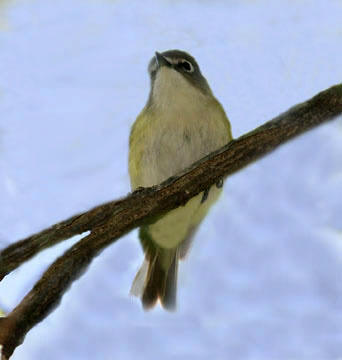
Blue-headed Vireo, Photo by Jo Heindel
Gray Vireo, the most often mis-identified vireo, is only known in Inyo County from the Grapevine Mountains along the CA-NV border where it breeds. There are many published reports which are far more likely to be Plumbeous Vireos, based on habitat and timing. This species is interesting in that they are seldom found migrating. They magically appear on their summering grounds, disappear, and just as magically appear on their wintering grounds. There is a story that needs to be written about the biology of this vireo!
The Yellow-throated Vireo, a vagrant from the East, has made it seven times to Inyo County and six times to Mono County. Most birds are seen from late May with a few in October.
The Blue-headed Vireo, a fall vagrant from the East, has been found twice in Inyo County and once in Mono County. Any claim of this species requires the highest level of evidence to be accepted by the California Bird Records Committee as a state record.
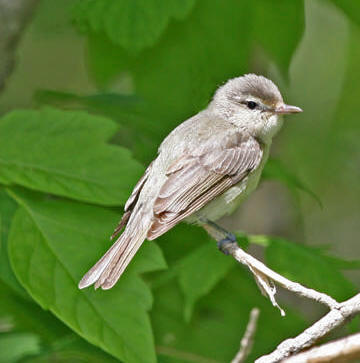
Warbling Vireo, Photo by Jo Heindel
The Cassin’s Vireo can appear brightly colored but at times is almost as dull as a Plumbeous. This spring and fall migrant passes through mainly from April to June and again late August to October.
The Plumbeous Vireo is an uncommon to fairly common dull-gray, summer resident in the White-Inyo Range as well as other ranges east of the Owens Valley, primarily in pinyon woodland. They are very sparingly found along the east slope of the Sierra into Mono County.
The Warbling Vireo is a fairly common breeder in the Sierra and other ranges to the east. Its song has been rendered “If you squeeze me, will I squirt!” and they are known to sing while incubating eggs. There are also spring and fall migrants who use the Eastern Sierra as a freeway to and from their breeding areas.
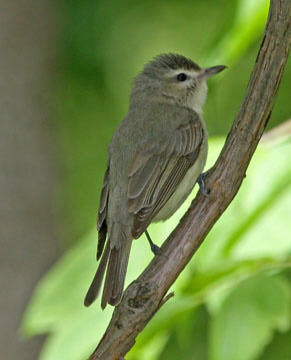
Philadelphia Vireo, Photo by Jo Heindel
The Philadelphia Vireo, a vagrant from northeast U.S. and Canada, has been recorded seven times in Inyo County with six birds seen from September to October and one in late May. In Mono County there are a few records from late 23-31 May with summer birds in June to July 2005 and June 1998. Observers are encouraged to gather breeding data of vireos and other species and submit them to the authors for inclusion in the county database. Courting birds, nest building, feeding nestlings or recent fledglings are all valuable data. Besides, it gives one the chance to hear the bubbling, rasping, melodious, complex, and funny songs of our vireos!
Tags: vireo, warbler